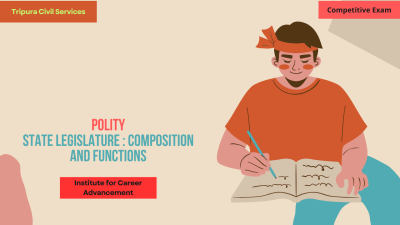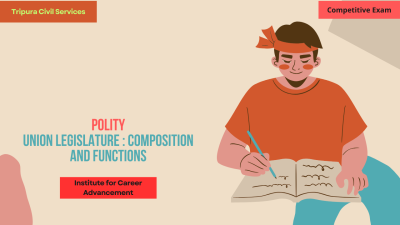Courses


 Compare
Compare
Provision for SCs (Scheduled Castes), STs (Scheduled Tribes), OBCs (Other Backward Classes), and Minorities in India refers to affirmative action and special measures designed to promote social, economic, and educational development of these historically marginalized groups. These provisions include: Reservation: Specific quotas in educational institutions, government jobs, and legislative bodies to ensure representation and equal opportunities. Scholarships and Financial Assistance: Targeted scholarships, grants, and subsidies to support their education and economic empowerment. Legal Protections: Laws to protect against discrimination and promote social justice, such as the Protection of Civil Rights Act and the Scheduled Castes and Scheduled Tribes (Prevention of Atrocities) Act. Development Programs: Government schemes aimed at improving the living standards of these communities, focusing on health, housing, and employment. These provisions aim to uplift marginalized sections, ensuring equality and social inclusion. ভারতে এসসি (তপশিলি জাতি), এসটি (তপশিলি উপজাতি), ওবিসি (অন্যান্য অনগ্রসর শ্রেণী) এবং সংখ্যালঘুদের জন্য বিধান এই ঐতিহাসিকভাবে প্রান্তিক গোষ্ঠীগুলির সামাজিক, অর্থনৈতিক এবং শিক্ষাগত বিকাশের জন্য পরিকল্পিত ইতিবাচক পদক্ষেপ এবং বিশেষ পদক্ষেপকে বোঝায়। এই বিধানগুলির মধ্যে রয়েছেঃ সংরক্ষণঃ প্রতিনিধিত্ব এবং সমান সুযোগ নিশ্চিত করার জন্য শিক্ষা প্রতিষ্ঠান, সরকারি চাকরি এবং আইন প্রণয়নকারী সংস্থাগুলিতে নির্দিষ্ট কোটা। বৃত্তি এবং আর্থিক সহায়তাঃ তাদের শিক্ষা এবং অর্থনৈতিক ক্ষমতায়নে সহায়তা করার জন্য লক্ষ্যযুক্ত বৃত্তি, অনুদান এবং ভর্তুকি। আইনি সুরক্ষাঃ বৈষম্যের বিরুদ্ধে সুরক্ষা এবং সামাজিক ন্যায়বিচারের প্রচারের জন্য আইন, যেমন নাগরিক অধিকার সুরক্ষা আইন এবং তফসিলি জাতি ও তফসিলি উপজাতি (অত্যাচার প্রতিরোধ) আইন। উন্নয়ন কর্মসূচিঃ স্বাস্থ্য, আবাসন এবং কর্মসংস্থানের উপর দৃষ্টি নিবদ্ধ করে এই সম্প্রদায়ের জীবনযাত্রার মান উন্নত করার লক্ষ্যে সরকারি প্রকল্প। এই বিধানগুলির লক্ষ্য হল প্রান্তিক শ্রেণীর উত্থান, সমতা ও সামাজিক অন্তর্ভুক্তি নিশ্চিত করা।
0 Lessons
Hours

 Compare
Compare
The Judiciary in India is an independent body responsible for interpreting and upholding the laws of the country. It ensures justice by resolving disputes, protecting individual rights, and maintaining the rule of law. The judiciary operates through a hierarchy of courts, with the Supreme Court of India at the top, followed by High Courts at the state level and District Courts at the lower level. Key functions of the judiciary include: Interpretation of the Constitution and laws. Judicial review of laws and executive actions. Protection of fundamental rights and freedoms. Settlement of disputes between individuals, states, and the central government. The Indian judiciary is known for its independence, and it acts as a check on the powers of the legislature and the executive, ensuring that no law or action violates the Constitution. The Supreme Court has the final authority on legal matters and serves as the guardian of the Constitution. ভারতের বিচার বিভাগ একটি স্বাধীন সংস্থা যা দেশের আইনগুলির ব্যাখ্যা ও সমুন্নত রাখার জন্য দায়বদ্ধ। এটি বিরোধ নিষ্পত্তি, ব্যক্তিগত অধিকার রক্ষা এবং আইনের শাসন বজায় রেখে ন্যায়বিচার নিশ্চিত করে। বিচার বিভাগ আদালতের একটি শ্রেণিবিন্যাসের মাধ্যমে কাজ করে, যার শীর্ষে ভারতের সুপ্রিম কোর্ট, তারপরে রাজ্য পর্যায়ে হাইকোর্ট এবং নিম্ন স্তরে জেলা আদালত রয়েছে। বিচার বিভাগের প্রধান কাজগুলির মধ্যে রয়েছেঃ সংবিধান ও আইনের ব্যাখ্যা। আইন ও কার্যনির্বাহী পদক্ষেপের বিচার বিভাগীয় পর্যালোচনা। মৌলিক অধিকার ও স্বাধীনতার সুরক্ষা। ব্যক্তি, রাজ্য এবং কেন্দ্রীয় সরকারের মধ্যে বিরোধ নিষ্পত্তি। ভারতীয় বিচার বিভাগ তার স্বাধীনতার জন্য পরিচিত এবং এটি আইনসভা ও কার্যনির্বাহীর ক্ষমতার উপর নজরদারি হিসাবে কাজ করে, যাতে কোনও আইন বা পদক্ষেপ সংবিধান লঙ্ঘন না করে। আইনি বিষয়ে সুপ্রিম কোর্টের চূড়ান্ত কর্তৃত্ব রয়েছে এবং সংবিধানের অভিভাবক হিসাবে কাজ করে।
0 Lessons
Hours

 Compare
Compare
The State Legislature in India is responsible for making laws at the state level and functioning in a manner similar to the Union Legislature. It is also a bicameral system, although not all states have a second house (Rajya Sabha equivalent). Composition: Legislative Assembly (Vidhan Sabha): The lower house, with members directly elected by the people of the state for a term of five years. The number of members varies depending on the population of the state. Legislative Council (Vidhan Parishad): The upper house, present only in some states (like Bihar, Karnataka, Maharashtra, etc.). Members are indirectly elected, with some nominated by the Governor and others elected by graduates, teachers, and local authority members. Functions: Legislative Function: The primary function is to make laws on subjects listed in the State List and Concurrent List of the Constitution. Financial Function: State Legislatures pass the state budget, approve state taxes, and control state spending. Oversight Function: They monitor and scrutinize the actions of the state government, holding it accountable through debates, questions, and committees. Constitutional Functions: Some states can propose amendments to the Constitution, and the Legislature plays a key role in ensuring the smooth implementation of central policies at the state level. In summary, the State Legislature ensures that states have a voice in governance, create laws specific to their needs, and contribute to the broader framework of India’s federal democracy. ভারতের রাজ্য আইনসভা রাজ্য পর্যায়ে আইন প্রণয়ন এবং কেন্দ্রীয় আইনসভার মতো কাজ করার জন্য দায়বদ্ধ। এটি একটি দ্বিকক্ষবিশিষ্ট ব্যবস্থা, যদিও সমস্ত রাজ্যের দ্বিতীয় কক্ষ (রাজ্যসভার সমতুল্য) নেই। গঠনঃ বিধানসভা (বিধানসভা) পাঁচ বছরের মেয়াদে রাজ্যের জনগণের দ্বারা সরাসরি নির্বাচিত সদস্যদের নিয়ে নিম্নকক্ষ। রাজ্যের জনসংখ্যার উপর নির্ভর করে সদস্যদের সংখ্যা পরিবর্তিত হয়। বিধান পরিষদ (বিধান পরিষদ) উচ্চকক্ষ, শুধুমাত্র কয়েকটি রাজ্যে (যেমন বিহার, কর্ণাটক, মহারাষ্ট্র ইত্যাদি) উপস্থিত রয়েছে। ) সদস্যরা পরোক্ষভাবে নির্বাচিত হন, কয়েকজন রাজ্যপাল দ্বারা মনোনীত হন এবং অন্যরা স্নাতক, শিক্ষক এবং স্থানীয় কর্তৃপক্ষের সদস্যদের দ্বারা নির্বাচিত হন। কার্যাবলীঃ আইন প্রণয়নের কাজঃ প্রাথমিক কাজ হল সংবিধানের রাজ্য তালিকা এবং সমবর্তী তালিকায় তালিকাভুক্ত বিষয়গুলির উপর আইন তৈরি করা। আর্থিক কার্যাবলীঃ রাজ্য আইনসভাগুলি রাজ্যের বাজেট পাস করে, রাজ্যের কর অনুমোদন করে এবং রাজ্যের ব্যয় নিয়ন্ত্রণ করে। নজরদারি ফাংশনঃ তারা রাজ্য সরকারের পদক্ষেপগুলি পর্যবেক্ষণ ও যাচাই-বাছাই করে, বিতর্ক, প্রশ্ন এবং কমিটির মাধ্যমে তাদের জবাবদিহি করে। সাংবিধানিক কার্যাবলীঃ কিছু রাজ্য সংবিধান সংশোধনের প্রস্তাব দিতে পারে এবং রাজ্য পর্যায়ে কেন্দ্রীয় নীতিগুলির মসৃণ বাস্তবায়ন নিশ্চিত করতে আইনসভা গুরুত্বপূর্ণ ভূমিকা পালন করে। সংক্ষেপে, রাজ্য আইনসভা নিশ্চিত করে যে রাজ্যগুলির প্রশাসনে একটি কণ্ঠস্বর রয়েছে, তাদের প্রয়োজনের জন্য নির্দিষ্ট আইন তৈরি করে এবং ভারতের যুক্তরাষ্ট্রীয় গণতন্ত্রের বিস্তৃত কাঠামোতে অবদান রাখে।
0 Lessons
Hours

 Compare
Compare
The Union Legislature of India, also known as the Parliament, is a bicameral body composed of two houses: Lok Sabha (House of the People): It has a maximum of 545 members, directly elected by the people of India through general elections for a five-year term. The Lok Sabha is responsible for making laws, debating issues, and representing the public. Rajya Sabha (Council of States): It consists of 245 members, with some being elected by the members of the State Legislative Assemblies, while others are nominated. Rajya Sabha represents the states and Union territories and serves as a revising chamber for legislation. Functions of the Union Legislature: Legislative Function: Making laws on subjects enumerated in the Union List and Concurrent List. Financial Function: Approving the national budget and taxation policies. Oversight Function: Scrutinizing the actions of the executive and ensuring accountability. Constitutional Function: Amending the Constitution, if required. Representation: Representing the people of India at the national level. ভারতের কেন্দ্রীয় আইনসভা, যা সংসদ নামেও পরিচিত, দুটি কক্ষ নিয়ে গঠিত একটি দ্বিদলীয় সংস্থাঃ লোকসভা (জনগণের সদন) এর সর্বোচ্চ 545 জন সদস্য রয়েছে, যারা পাঁচ বছরের মেয়াদে সাধারণ নির্বাচনের মাধ্যমে ভারতের জনগণের দ্বারা সরাসরি নির্বাচিত হন। লোকসভা আইন প্রণয়ন, বিষয় নিয়ে বিতর্ক এবং জনসাধারণের প্রতিনিধিত্ব করার জন্য দায়বদ্ধ। রাজ্যসভা (রাজ্য পরিষদ) 245 জন সদস্য নিয়ে গঠিত, যার মধ্যে কয়েকজন রাজ্য বিধানসভার সদস্যদের দ্বারা নির্বাচিত হন, অন্যরা মনোনীত হন। রাজ্যসভা রাজ্য ও কেন্দ্রশাসিত অঞ্চলগুলির প্রতিনিধিত্ব করে এবং আইন প্রণয়নের জন্য একটি সংশোধনকারী চেম্বার হিসাবে কাজ করে। কেন্দ্রীয় আইনসভার কার্যাবলীঃ আইন প্রণয়নের কাজঃ ইউনিয়ন তালিকা এবং সমবর্তী তালিকায় তালিকাভুক্ত বিষয়গুলির উপর আইন প্রণয়ন করা। আর্থিক কার্যাবলীঃ জাতীয় বাজেট ও কর নীতি অনুমোদন। তত্ত্বাবধানের কাজঃ নির্বাহীর কার্যাবলী যাচাই করা এবং জবাবদিহিতা নিশ্চিত করা। সাংবিধানিক কার্যাবলীঃ প্রয়োজনে সংবিধান সংশোধন করা। প্রতিনিধিত্বঃ জাতীয় পর্যায়ে ভারতের জনগণের প্রতিনিধিত্ব করা।
0 Lessons
Hours

 Compare
Compare
Centre-State Relations in India refer to the distribution of powers, responsibilities, and functions between the Central Government (Union Government) and State Governments. These relations are governed by the Indian Constitution, which establishes a federal system with a clear demarcation of powers between the Centre and States. Key Aspects: Division of Powers: The Constitution outlines specific powers for the Centre and States through three lists in the Seventh Schedule: Union List: Subjects on which only the Central Government can legislate. State List: Subjects on which only the State Governments can legislate. Concurrent List: Subjects where both the Centre and States can legislate, with precedence given to central laws in case of conflict. Financial Relations: The Constitution also defines the financial relationships between the Centre and the States, including the distribution of taxes, grants, and the mechanism for financial assistance. Dispute Resolution: In case of disputes between the Centre and States, the Supreme Court has the authority to resolve conflicts and interpret the Constitution. Emergency Provisions: The Centre has the power to impose emergency measures, such as a National Emergency or a President’s Rule (imposing central control in a state), in certain situations, which can affect the normal functioning of state governments. Cooperative Federalism: While the Constitution provides for a division of powers, cooperative federalism emphasizes the need for cooperation and collaboration between the Centre and States to address national and regional issues. In summary, Centre-State Relations are a complex balance of cooperation, autonomy, and control, ensuring governance is both centralized and decentralized based on constitutional provisions. ভারতে কেন্দ্র-রাজ্য সম্পর্ক বলতে কেন্দ্রীয় সরকার (কেন্দ্রীয় সরকার) এবং রাজ্য সরকারগুলির মধ্যে ক্ষমতা, দায়িত্ব এবং কার্যাবলীর বণ্টনকে বোঝায়। এই সম্পর্কগুলি ভারতীয় সংবিধান দ্বারা পরিচালিত হয়, যা কেন্দ্র ও রাজ্যগুলির মধ্যে ক্ষমতার একটি স্পষ্ট সীমানা নির্ধারণ সহ একটি যুক্তরাষ্ট্রীয় ব্যবস্থা প্রতিষ্ঠা করে। মূল দিকগুলিঃ ক্ষমতার বিভাজনঃ সংবিধান সপ্তম তফসিলের তিনটি তালিকার মাধ্যমে কেন্দ্র ও রাজ্যগুলির জন্য নির্দিষ্ট ক্ষমতার রূপরেখা দেয়ঃ ইউনিয়ন তালিকাঃ যে বিষয়গুলির উপর শুধুমাত্র কেন্দ্রীয় সরকার আইন প্রণয়ন করতে পারে। রাজ্য তালিকাঃ যে বিষয়গুলির উপর শুধুমাত্র রাজ্য সরকারগুলি আইন প্রণয়ন করতে পারে। সমবর্তী তালিকাঃ এমন বিষয় যেখানে কেন্দ্র ও রাজ্য উভয়ই আইন প্রণয়ন করতে পারে, সংঘাতের ক্ষেত্রে কেন্দ্রীয় আইনকে অগ্রাধিকার দেওয়া হয়। আর্থিক সম্পর্কঃ সংবিধান কর বিতরণ, অনুদান এবং আর্থিক সহায়তার ব্যবস্থা সহ কেন্দ্র ও রাজ্যগুলির মধ্যে আর্থিক সম্পর্ককেও সংজ্ঞায়িত করে। বিরোধ নিষ্পত্তিঃ কেন্দ্র ও রাজ্যগুলির মধ্যে বিরোধের ক্ষেত্রে, সুপ্রিম কোর্টের দ্বন্দ্ব সমাধান এবং সংবিধানের ব্যাখ্যা করার ক্ষমতা রয়েছে। জরুরি ব্যবস্থাঃ নির্দিষ্ট পরিস্থিতিতে জাতীয় জরুরি অবস্থা বা রাষ্ট্রপতি শাসন (কোনও রাজ্যে কেন্দ্রীয় নিয়ন্ত্রণ আরোপ)-এর মতো জরুরি ব্যবস্থা আরোপ করার ক্ষমতা কেন্দ্রের রয়েছে, যা রাজ্য সরকারের স্বাভাবিক কাজকর্মকে প্রভাবিত করতে পারে। সমবায় যুক্তরাষ্ট্রীয়বাদঃ সংবিধানে ক্ষমতার বিভাজনের বিধান থাকলেও সমবায় যুক্তরাষ্ট্রীয়বাদ জাতীয় ও আঞ্চলিক সমস্যাগুলির সমাধানে কেন্দ্র ও রাজ্যগুলির মধ্যে সহযোগিতা ও সহযোগিতার প্রয়োজনীয়তার উপর জোর দেয়। সংক্ষেপে, কেন্দ্র-রাজ্য সম্পর্ক হল সহযোগিতা, স্বায়ত্তশাসন এবং নিয়ন্ত্রণের একটি জটিল ভারসাম্য, যা নিশ্চিত করে যে শাসন উভয়ই সাংবিধানিক বিধানের ভিত্তিতে কেন্দ্রীভূত এবং বিকেন্দ্রীভূত।
0 Lessons
Hours

 Compare
Compare
The State Government of India mirrors the structure of the Union Government and consists of the Governor, Chief Minister, and Council of Ministers. Here's a brief description of each component: 1. Governor The Governor is the ceremonial head of the state, representing the President of India at the state level. They are appointed by the President and perform various constitutional duties, including appointing the Chief Minister, promulgating ordinances, and ensuring the state government's functioning aligns with the Constitution. The Governor's powers are largely exercised on the advice of the Chief Minister and the Council of Ministers. 2. Chief Minister The Chief Minister is the head of the state government and the most powerful figure at the state level. They are responsible for running the administration, formulating policies, and leading the state's legislative process. The Chief Minister is appointed by the Governor and usually leads the party (or coalition) with a majority in the state legislature. They play a central role in advising the Governor and managing the state's affairs. 3. Council of Ministers The Council of Ministers, headed by the Chief Minister, assists in the administration of the state. It is responsible for formulating policies, enacting laws, and managing the various government departments. The Council of Ministers includes Cabinet Ministers, Ministers of State, and Deputy Ministers, each assigned specific portfolios. They collectively answer to the state legislature (Legislative Assembly or Vidhan Sabha) and work together to implement the state's government programs and policies. This structure ensures that the state government functions effectively, with the Governor serving as the constitutional figurehead and the Chief Minister and Council of Ministers exercising executive powers to govern the state. ভারতের রাজ্য সরকার কেন্দ্রীয় সরকারের কাঠামোকে প্রতিফলিত করে এবং রাজ্যপাল, মুখ্যমন্ত্রী এবং মন্ত্রী পরিষদ নিয়ে গঠিত। এখানে প্রতিটি উপাদানের একটি সংক্ষিপ্ত বিবরণ দেওয়া হলঃ 1টি। রাজ্যপাল রাজ্যপাল হলেন রাজ্যের আনুষ্ঠানিক প্রধান, যিনি রাজ্য পর্যায়ে ভারতের রাষ্ট্রপতির প্রতিনিধিত্ব করেন। তাঁরা রাষ্ট্রপতি কর্তৃক নিযুক্ত হন এবং মুখ্যমন্ত্রী নিয়োগ, অধ্যাদেশ জারি এবং রাজ্য সরকারের কাজকর্ম সংবিধানের সঙ্গে সামঞ্জস্যপূর্ণ হওয়া নিশ্চিত করা সহ বিভিন্ন সাংবিধানিক দায়িত্ব পালন করেন। রাজ্যপালের ক্ষমতা মূলত মুখ্যমন্ত্রী ও মন্ত্রিপরিষদের পরামর্শে প্রয়োগ করা হয়। 2. মুখ্যমন্ত্রী মুখ্যমন্ত্রী হলেন রাজ্য সরকারের প্রধান এবং রাজ্য পর্যায়ে সবচেয়ে শক্তিশালী ব্যক্তিত্ব। তারা প্রশাসন পরিচালনা, নীতি প্রণয়ন এবং রাজ্যের আইন প্রণয়ন প্রক্রিয়ার নেতৃত্ব দেওয়ার জন্য দায়বদ্ধ। মুখ্যমন্ত্রী রাজ্যপাল দ্বারা নিযুক্ত হন এবং সাধারণত রাজ্য আইনসভায় সংখ্যাগরিষ্ঠ দল (বা জোট)-কে নেতৃত্ব দেন। রাজ্যপালকে পরামর্শ দেওয়া এবং রাজ্যের বিষয়গুলি পরিচালনার ক্ষেত্রে তাঁরা কেন্দ্রীয় ভূমিকা পালন করেন। 3. মন্ত্রী পরিষদ মুখ্যমন্ত্রীর নেতৃত্বে মন্ত্রী পরিষদ রাজ্যের প্রশাসনে সহায়তা করে। এটি নীতি প্রণয়ন, আইন প্রণয়ন এবং বিভিন্ন সরকারি বিভাগ পরিচালনার জন্য দায়বদ্ধ। মন্ত্রী পরিষদে ক্যাবিনেট মন্ত্রী, প্রতিমন্ত্রী এবং উপমন্ত্রীরা রয়েছেন, যাদের প্রত্যেককে নির্দিষ্ট পোর্টফোলিও দেওয়া হয়। তারা সম্মিলিতভাবে রাজ্য আইনসভাকে (বিধানসভা বা বিধানসভা) উত্তর দেয় এবং রাজ্য সরকারের কর্মসূচি ও নীতি বাস্তবায়নের জন্য একসঙ্গে কাজ করে। এই কাঠামোটি নিশ্চিত করে যে রাজ্য সরকার কার্যকরভাবে কাজ করে, রাজ্যপাল সাংবিধানিক ব্যক্তিত্ব হিসাবে দায়িত্ব পালন করেন এবং মুখ্যমন্ত্রী ও মন্ত্রী পরিষদ রাজ্য পরিচালনার জন্য নির্বাহী ক্ষমতা প্রয়োগ করেন।
0 Lessons
Hours

 Compare
Compare
The Union Government of India consists of three key elements: the President, the Prime Minister, and the Council of Ministers. President: The President of India is the ceremonial head of state and the supreme commander of the armed forces. The President represents the unity and integrity of the country but acts mainly on the advice of the Prime Minister and the Council of Ministers. Prime Minister: The Prime Minister is the head of government and exercises executive powers. The Prime Minister leads the Council of Ministers, represents India both domestically and internationally, and plays a central role in formulating and implementing policies. Council of Ministers: The Council of Ministers is a body of appointed officials, headed by the Prime Minister, that assists in the administration of the government. It consists of Cabinet Ministers, Ministers of State, and Deputy Ministers, each handling specific portfolios. They collectively help in decision-making and policy implementation. This structure defines the functioning of the executive branch of the Union Government in India. ভারতের কেন্দ্রীয় সরকার তিনটি মূল উপাদান নিয়ে গঠিতঃ রাষ্ট্রপতি, প্রধানমন্ত্রী এবং মন্ত্রী পরিষদ। রাষ্ট্রপতিঃ ভারতের রাষ্ট্রপতি হলেন আনুষ্ঠানিক রাষ্ট্রপ্রধান এবং সশস্ত্র বাহিনীর সর্বোচ্চ সেনাপতি। রাষ্ট্রপতি দেশের ঐক্য ও অখণ্ডতার প্রতিনিধিত্ব করেন কিন্তু প্রধানত প্রধানমন্ত্রী ও মন্ত্রিপরিষদের পরামর্শে কাজ করেন। প্রধানমন্ত্রীঃ প্রধানমন্ত্রী হলেন সরকারের প্রধান এবং নির্বাহী ক্ষমতা প্রয়োগ করেন। প্রধানমন্ত্রী মন্ত্রী পরিষদের নেতৃত্ব দেন, দেশীয় ও আন্তর্জাতিক উভয় ক্ষেত্রেই ভারতের প্রতিনিধিত্ব করেন এবং নীতি প্রণয়ন ও বাস্তবায়নে কেন্দ্রীয় ভূমিকা পালন করেন। মন্ত্রী পরিষদঃ মন্ত্রী পরিষদ হল প্রধানমন্ত্রীর নেতৃত্বে নিযুক্ত কর্মকর্তাদের একটি সংস্থা, যা সরকারের প্রশাসনে সহায়তা করে। এটি ক্যাবিনেট মন্ত্রী, প্রতিমন্ত্রী এবং উপমন্ত্রীদের নিয়ে গঠিত, প্রত্যেকে নির্দিষ্ট পোর্টফোলিওগুলি পরিচালনা করে। তারা সম্মিলিতভাবে সিদ্ধান্ত গ্রহণ এবং নীতি বাস্তবায়নে সহায়তা করে। এই কাঠামোটি ভারতে কেন্দ্রীয় সরকারের কার্যনির্বাহী শাখার কার্যকারিতা নির্ধারণ করে।
0 Lessons
Hours

 Compare
Compare
The Directive Principles of State Policy are guidelines or principles enshrined in Part IV (Articles 36-51) of the Indian Constitution. They are intended to guide the government in making laws and policies aimed at establishing a just and equitable society. These principles emphasize social, economic, and political justice, and include provisions for the welfare of the people, such as ensuring adequate livelihood, education, healthcare, fair distribution of wealth, and protection of the environment. While these directives are not legally enforceable, they serve as moral obligations for the government to work towards the overall well-being of the citizens and reduce inequalities in society. They are fundamental in the governance of the country, providing a vision for progressive policy-making and governance. রাজ্য নীতির নির্দেশক নীতিগুলি ভারতীয় সংবিধানের চতুর্থ অংশে (অনুচ্ছেদ 36-51) অন্তর্ভুক্ত নির্দেশিকা বা নীতি। তাদের উদ্দেশ্য হল একটি ন্যায়সঙ্গত ও ন্যায়সঙ্গত সমাজ প্রতিষ্ঠার লক্ষ্যে আইন ও নীতি প্রণয়নে সরকারকে নির্দেশনা দেওয়া। এই নীতিগুলি সামাজিক, অর্থনৈতিক ও রাজনৈতিক ন্যায়বিচারের উপর জোর দেয় এবং জনগণের কল্যাণে পর্যাপ্ত জীবিকা, শিক্ষা, স্বাস্থ্যসেবা, সম্পদের ন্যায্য বন্টন এবং পরিবেশ সুরক্ষার মতো বিধান অন্তর্ভুক্ত করে। যদিও এই নির্দেশাবলী আইনত প্রয়োগযোগ্য নয়, তবে এগুলি নাগরিকদের সামগ্রিক কল্যাণের জন্য এবং সমাজে বৈষম্য হ্রাস করার জন্য সরকারের জন্য নৈতিক বাধ্যবাধকতা হিসাবে কাজ করে। এগুলি দেশের শাসনব্যবস্থায় মৌলিক, যা প্রগতিশীল নীতি প্রণয়ন ও শাসনব্যবস্থার জন্য একটি দৃষ্টিভঙ্গি প্রদান করে।
0 Lessons
Hours

 Compare
Compare
Fundamental Duties are a set of moral obligations and responsibilities that citizens of India are expected to follow. These duties are outlined in Part IVA (Article 51A) of the Indian Constitution, which includes promoting harmony, respecting the national flag and anthem, safeguarding public property, protecting the environment, and ensuring a just and responsible participation in the nation's democratic processes. These duties serve as a guide for responsible citizenship and help in the development of a just and progressive society. মৌলিক কর্তব্য হল নৈতিক বাধ্যবাধকতা এবং দায়িত্বের একটি সেট যা ভারতের নাগরিকদের অনুসরণ করা উচিত বলে আশা করা হয়। এই দায়িত্বগুলি ভারতীয় সংবিধানের পার্ট IVA (অনুচ্ছেদ 51A)-তে বর্ণিত হয়েছে, যার মধ্যে রয়েছে সম্প্রীতি প্রচার, জাতীয় পতাকা ও সংগীতকে সম্মান করা, সরকারী সম্পত্তি রক্ষা করা, পরিবেশ রক্ষা করা এবং দেশের গণতান্ত্রিক প্রক্রিয়াগুলিতে ন্যায়সঙ্গত ও দায়িত্বশীল অংশগ্রহণ নিশ্চিত করা। এই দায়িত্বগুলি দায়িত্বশীল নাগরিকত্বের পথপ্রদর্শক হিসাবে কাজ করে এবং একটি ন্যায়সঙ্গত ও প্রগতিশীল সমাজের বিকাশে সহায়তা করে।
0 Lessons
Hours